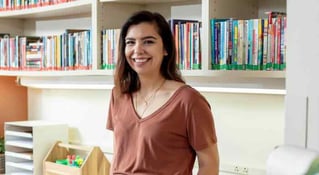In 2007, Woodland Park High School in Woodland Park, Colo., created a genuine revolution in the way that teachers look at learning.
In an effort to assist absent students in getting caught up on material they had missed, chemistry teachers Aaron Sams and Jonathan Bergmann began to record lessons, annotate them, and post them online.
But it wasn’t just the absent students who found this useful; students in class also used the material to review what they learned and reinforce crucial concepts from the day. In observing how their students were using the materials they had created, Sams and Bergmann soon came up with a notion that has been a hot topic ever since: the “flipped classroom.”
What is a “flipped classroom” and how does it work?
A “flipped classroom” is one in which students review selected interactive materials before they come to class and use class time to advance the basic concepts they’ve already acquired.
This method of teaching has had some pretty stunning results: one study shows that before being flipped, more than 50% of high school freshmen failed English and 44% failed math. There were 736 discipline cases in one semester. After flipping, the same pool of participants saw a dramatic decrease in these numbers: 19% of freshmen failed English, 13% failed math, and 249 discipline cases were reported in one semester.
Since the flipped classroom model places responsibility for learning on the student, it’s proven highly effective in fostering higher-level critical thinking. Rather than lectures about basic precepts, class time can be used to actively engage in experiments and activities which take knowledge to a new level. In this way, a teacher can observe a student’s thinking on higher levels and assist in his or her critical application of learned skills.
How can I best apply it?
The most successful classroom flips are those that don’t overwhelm students before a lesson, allow students to take an active role in what they are learning, and encourage them to ask questions as they go.
Effective flipped classrooms will require students to bring in notes or questions about their pre-class preparation in order to encourage active engagement with pre-class videos. They also devote in-class time to creative application of concepts rather than flat discussion; not only does this model engage the greatest possible number of learning styles, but it also requires students to immediately apply and critically analyze the raw facts they have been presented with.
What resources can I use to help me help my students?
One comprehensive resource is Sophia, which offers complimentary interactive tools and technology for use in the classroom. The site is also home to a Professional Learning Network, which connects teaching professionals with peers to discuss classroom techniques, standards, and challenges they face every day.
Additional resources to consider include iTunesU podcasts (the Flipped Learning Network Podcast is just one example) and several apps and websites designed for educational use.
Where should I begin?
With careful preparation, a flipped classroom can be an extremely effective tool for both tech-savvy teachers and those who aren’t entirely comfortable with technology. If you’re new to flipping, here are some quick tips to get you started:
- Connect with another teacher who does this effectively as a part of his or her curriculum.
- Make sure every student has access to the necessary technology to fully participate in the lessons.
- Use Educational Technology and Mobile Learning’s step-by-step tutorial on how to flip a classroom (with Ted-Ed as an example).
- PowerPoint is a great tool to help you prepare pre-lessons for your students. Microsoft offers free online training courses for those who want to brush up on slideshow skills.
- Try not to assign more than three video watching or PowerPoint sessions a week, and keep them to ten or fifteen minutes.



